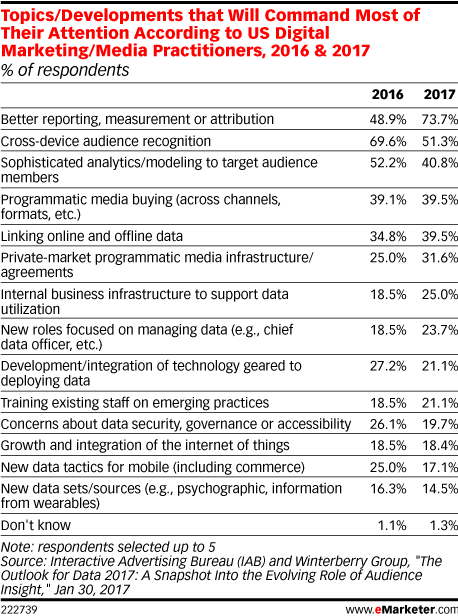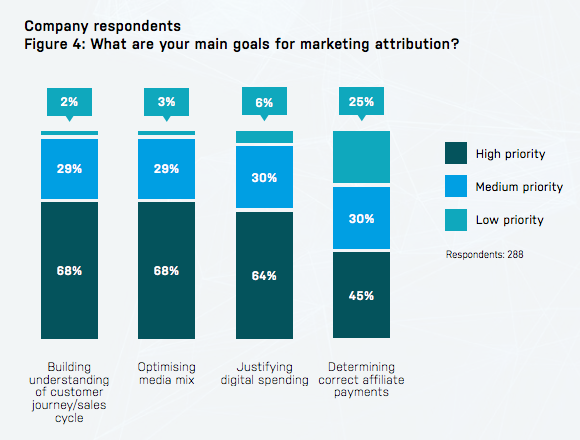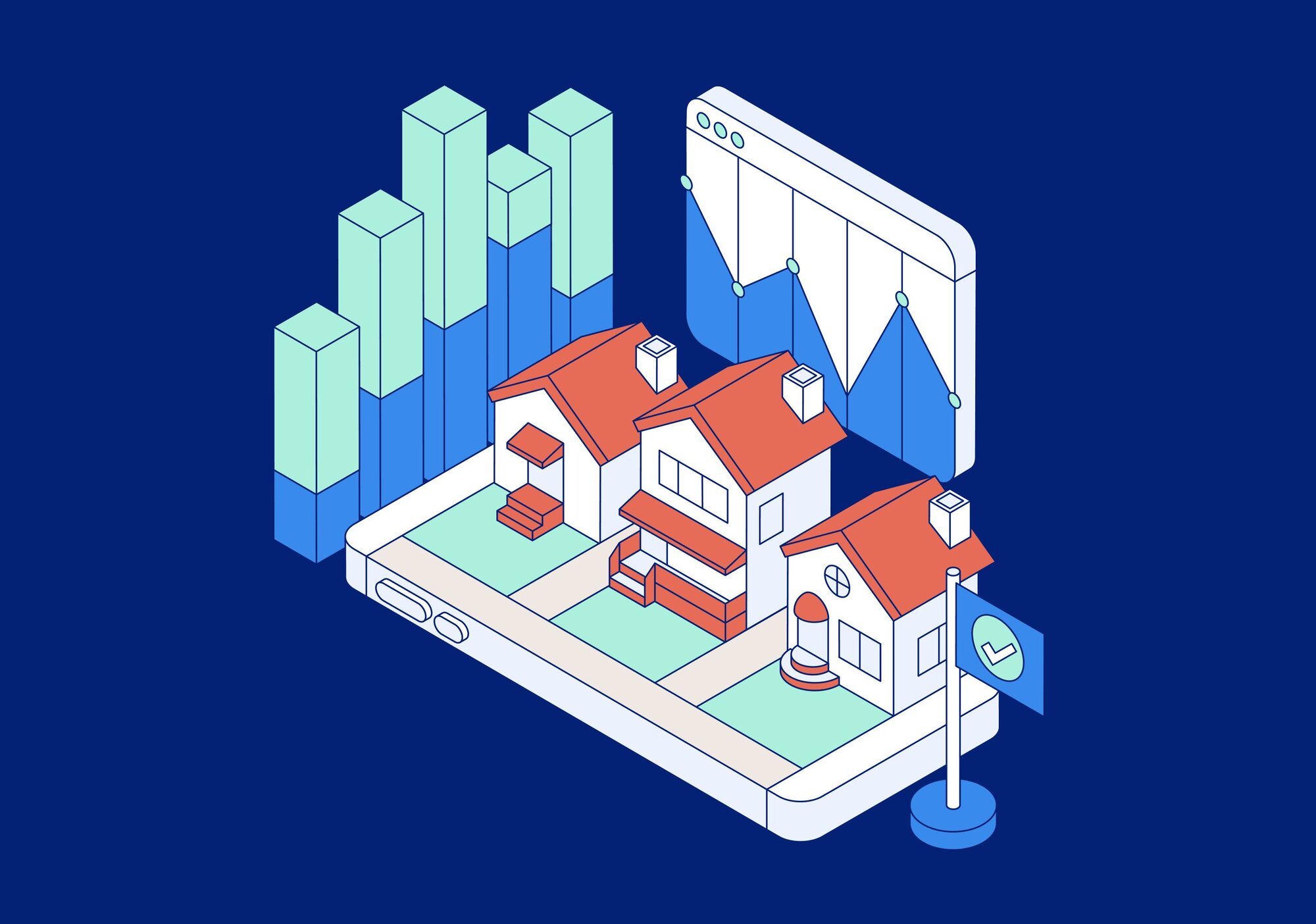A recent poll from the Interactive Advertising Bureau shows that marketers have been making holistic attribution a priority in this year. A report from eMarketer indicates that leaders in digital marketing and media across industries are devoting time and effort into “better reporting, measurement and attribution, alongside many other customer-centric practices, such as cross-device audience recognition and audience targeting.” In fact, the survey data shows a 50% jump from 2016 to 2017 in marketers who said honing in their reporting and attribution was a top priority.
Marketers have always had to measure their return on investment, so why the sudden upsurge of interest in attribution modeling? As the digital marketplace continues to evolve and change, the ways in which marketers can reach their audiences has become more complex and harder to track. The touch points involved in turning an online visitor into a lead into a sale are much more numerous and multifaceted.
And yet, “close to 80% of advertisers still use last click as their primary attribution model—even when they consider it insufficient,” according to display advertising company Criteo.
Many companies want to implement a more multi-touch and multi-channel attribution model, but the process can be arduous and disruptive. It also often requires new technology and adjustments of the current marketing stack. There’s also an element of the unknown required in making the switch, as customized attribution models are based off some element of predictive analytics.
There’s got to be an easier way, right? There sort of is. Call attribution gives marketers an analysis of every marketing touchpoint that led to a phone call conversion. This is crucial as “phone calls are the new click” in the marketing world, according to BIA/Kelsey. As mobile search has overtaken desktop search as the main way people are finding what they need, it’s critical that businesses find methods to track the steps that lead a visitor to make a phone call.
Local businesses have often relied on the “how did you hear about us?” method to determine the source of their calls, but this is much less reliable. Someone may attribute their call to a Google search, when really they clicked an ad on Facebook or saw your billboard during their commute.
Call attribution software gives marketers the data they need for call-related conversions to determine which sources are driving the most calls and the most qualified leads. This information can lead to better optimized and more targeted campaigns.
A survey from AdRoll showed that marketers and agencies want better attribution in order to understand the user journey and how online and offline channels can work together to drive conversions. Marketers want to use this data to allocate their budgets as effectively for their particular campaigns and channels. Utilizing call tracking and attribution as an element of multi-channel attribution ensures that no element of a marketing campaign–online or offline–is missed.
The same survey indicates that 72% of the company marketers surveyed believe that a perfect attribution model is impossible. While perfection may be impossible, effective, precise, and informative models do exist. Including call tracking and attribution as part of the marketing attribution configuration can only mean more data for marketers to prove ROI, track the actual customer journey, and optimize their campaigns for superior results.












